I sometimes dream that I would love a garden that was a sea of blue. With a few lavender and an occasional white blossom thrown in for good measure, I think it would be stunning. Of course for me, this is just a pipe dream.
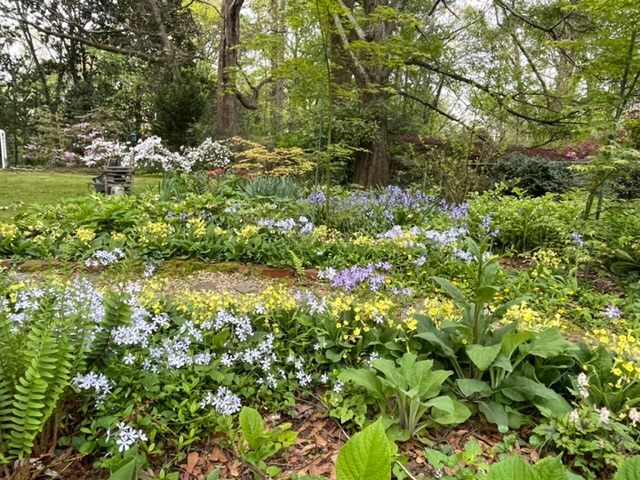
My garden is primarily perennials, meaning that I have learned to love the “one I got.” And the “one I got” is definitely not all blue. Though my early spring shade garden has an impressive number of blue blossoms from phlox, Virginia bluebells, scilla and forget-me-nots, the front sunny garden, in full glory, will be striped with every color of the rainbow, from red to violet and everything in between.
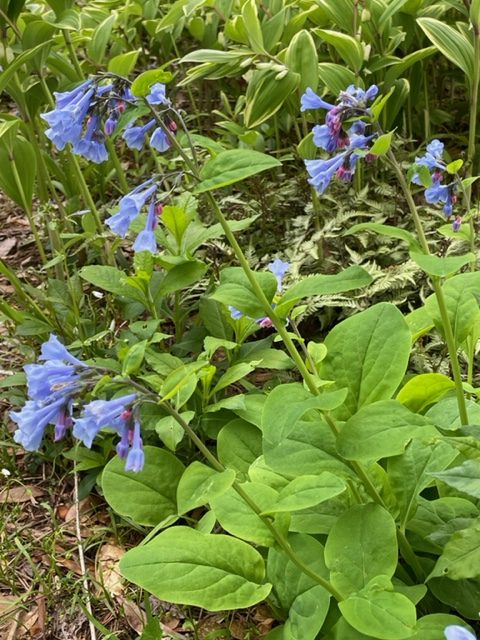
I’m not singing the blues. I do have pockets of indigo, violet and true blue flowers that make me very happy. One of my favorite plants in the garden, because it is such a pollinator magnet, is the indigo “Black and Blue” salvia. I have to keep it on a leash, though, otherwise it outgrows its allotted space and smothers smaller neighbors.
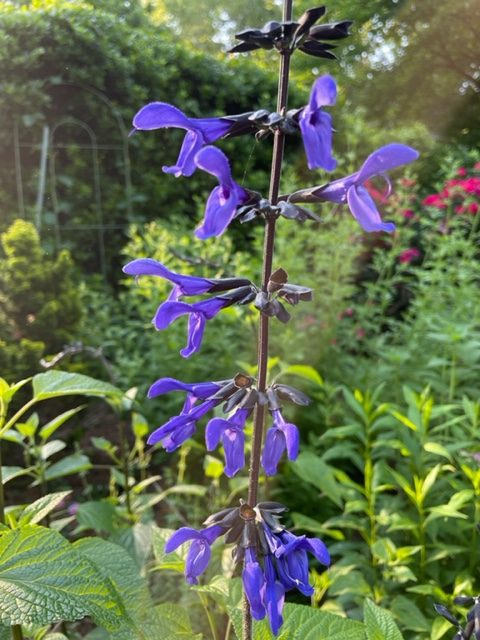
The smaller mealy blue sage is, in many ways, more satisfactory. It is easier to control and provides stalks of gorgeous blue flowers throughout the summer. Though more purple than blue, Pincushion flower has been in full bloom since early April and will continue to provide its spikes pinkish -blue flowers for another few weeks.

A true-blue plant that I’d not grown before is borage. Each star shaped blossom is sky blue and gorgeous. I started this from seed back in February and it has done remarkably well. However, it’s one of those plants that you have to appreciate each individual blossom because it definitely is not a heavy bloomer. It’s an annual and probably has made its one and only appearance in my garden.
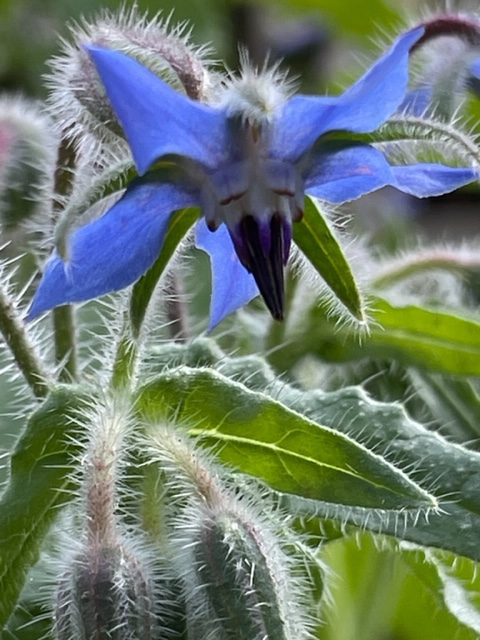
Definitely purple-not-blue, homestead purple verbena has stunned the garden with its neon flowers since late February. It is a sprawling, heavily flowered, low growing plant, often seen growing and blooming on roadsides. Frankly, it’s not my favorite. I have found the color a little jarring and the plant a little coarse for my taste. After its peak bloom, I’ll move it to the back and replace it with a white variety.

Because I love blue flowers so much, I was interested to read that there is actually no true blue pigment in flowers. The blossoms that appear blue actually contain red pigments called anthocyanins that look blue with different pH levels.
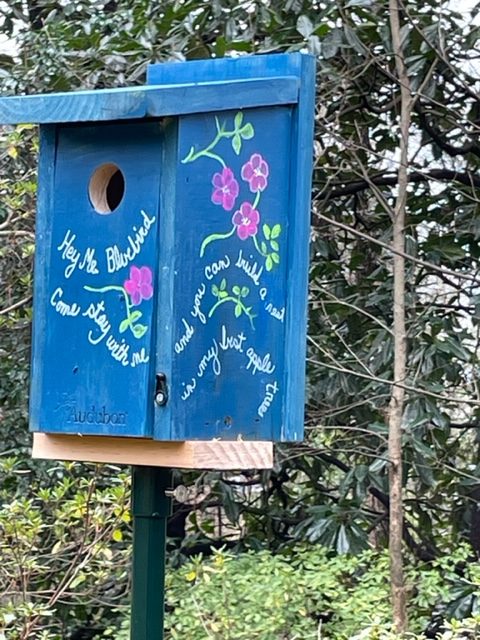
Though I appreciate all my flowers for the job they do offering pollen and nectar, beauty and fragrance, I especially appreciate the blue ones. With blue bird babies chirping in the back and waves of blue flowers in the front, I just love being tangled up in blue.
